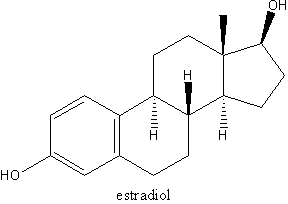Physicians have a new means of providing relief to postmenopausal women experiencing vaginal discomfort. Estring, a soft, flexible ring for insertion into the vagina. releases a slow, continuous dose of estradiol, an estrogen produced by the ovaries, that lasts for 90 days. Estring is used for treating local symptoms associated with postmenopausal changes in the vagina and/or lower urinary tract. Symptoms of urogenital atrophy (UGA) include vaginal dryness, burning, itching, and painful intercourse, as well as urinary urgency and painful urination.
"Since UGA is clearly one of the most common side effects of menopause and estrogen deficiency, it is something that all women should be asked about and, if indicated, it should be treated," maintains Fran E. Kaiser, professor of internal medicine and associate director of the Division of Geriatric Medicine and director of the Menopause Clinic, Saint Louis (Mo.) University School of Medicine.
As many as half of the 40,000,000 postmenopausal women in the U.S. suffer from UGA symptoms, yet it remains an under-recognized and under-treated condition. Until the availability of Estring, treatment options included estrogen tablets, transdermal patches, and vaginal creams. Estring provides an alternative that contains a very low dose of estrogen applied directly to the tissues of the vagina and urinary tract. "Because Estring does not raise blood levels of estrogen, it may be a good local therapy for women who are unable to take other types of estrogen replacement," Kaiser indicates.
Urogenital atrophy usually occurs around the time of menopause, when the ovaries stop producing estrogen. It is the most consistent and inevitable consequence of a long-term estrogen deficiency, with symptoms that can impact a woman's physical and psychosocial health. Unlike symptoms of menopause, such as hot flashes, those of UGA do not go away with time and may lead to more serious problems.
COPYRIGHT 1998 Society for the Advancement of Education
COPYRIGHT 2000 Gale Group



